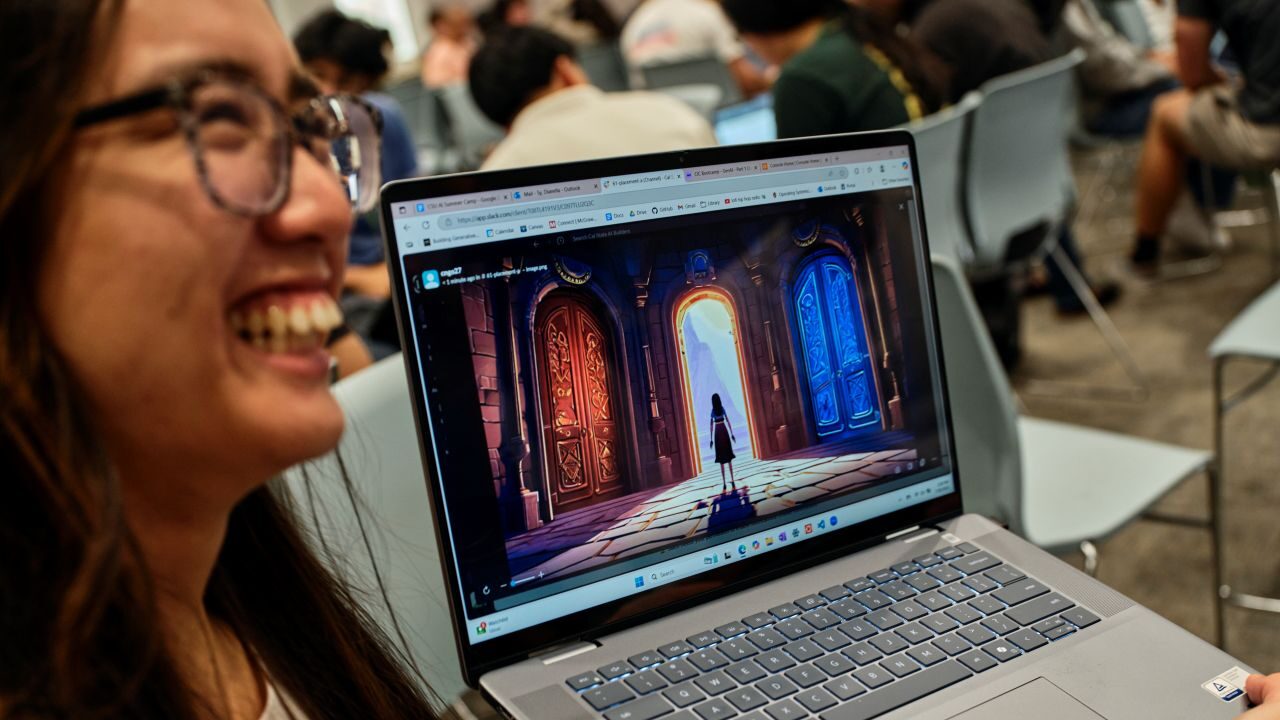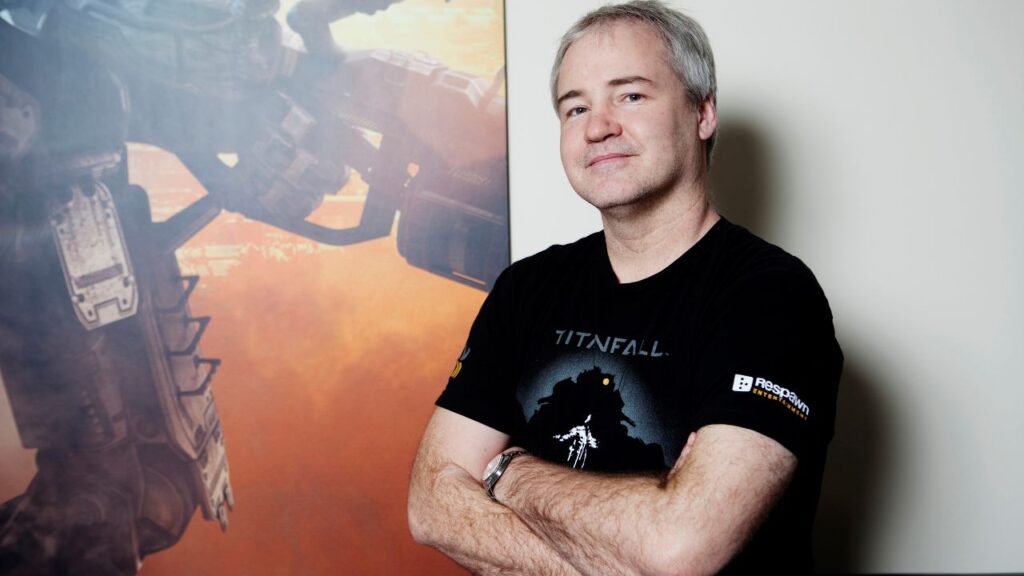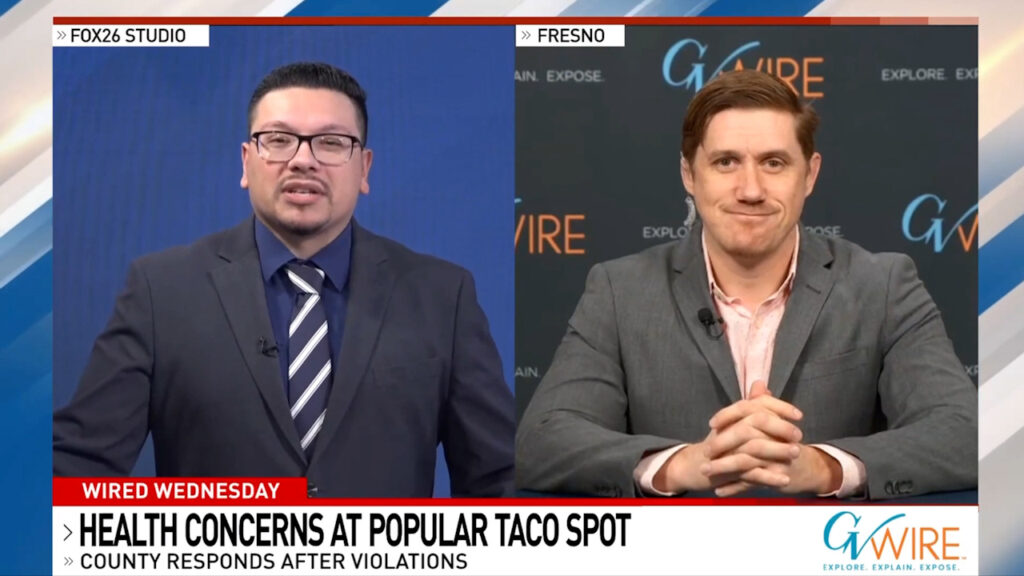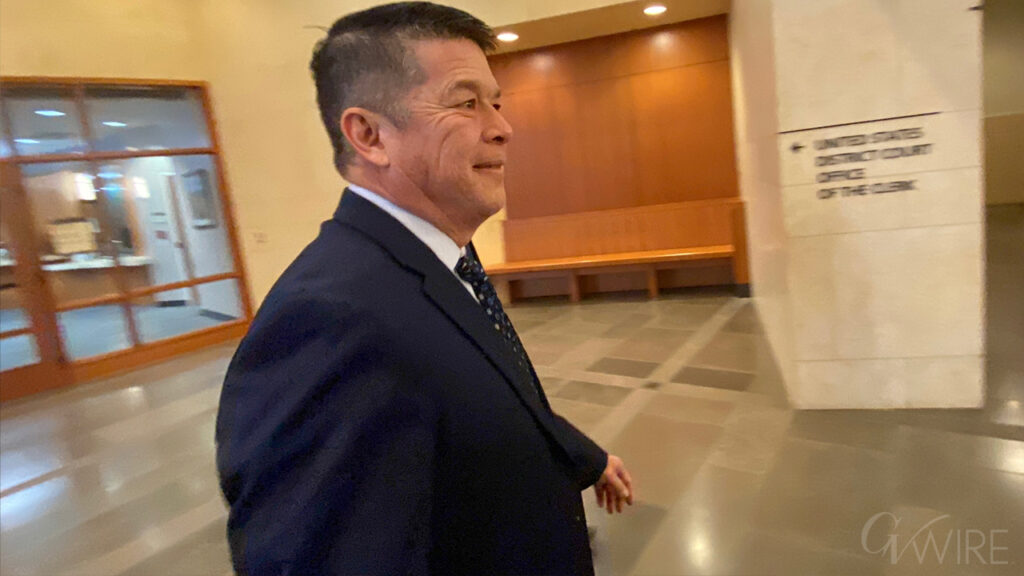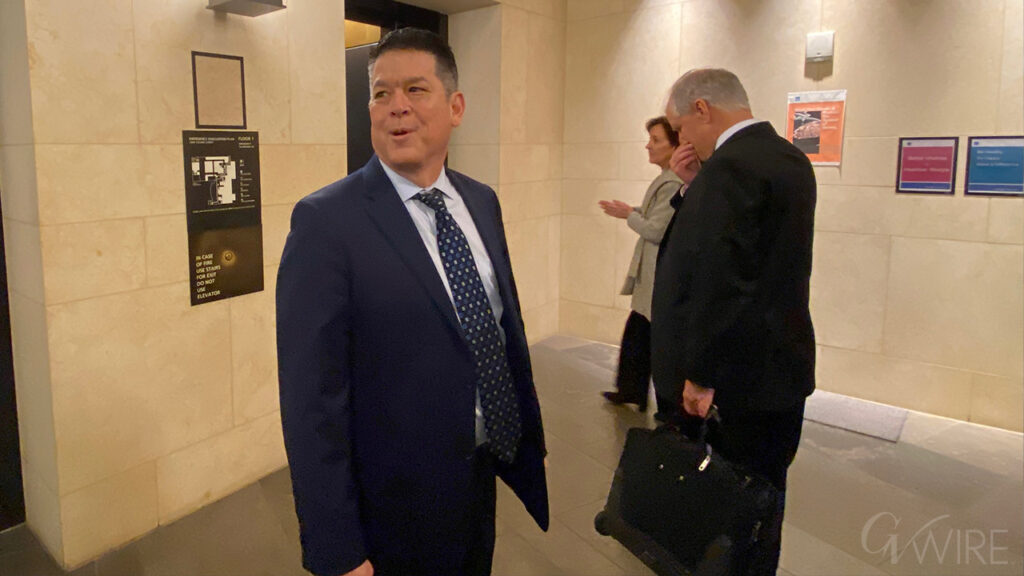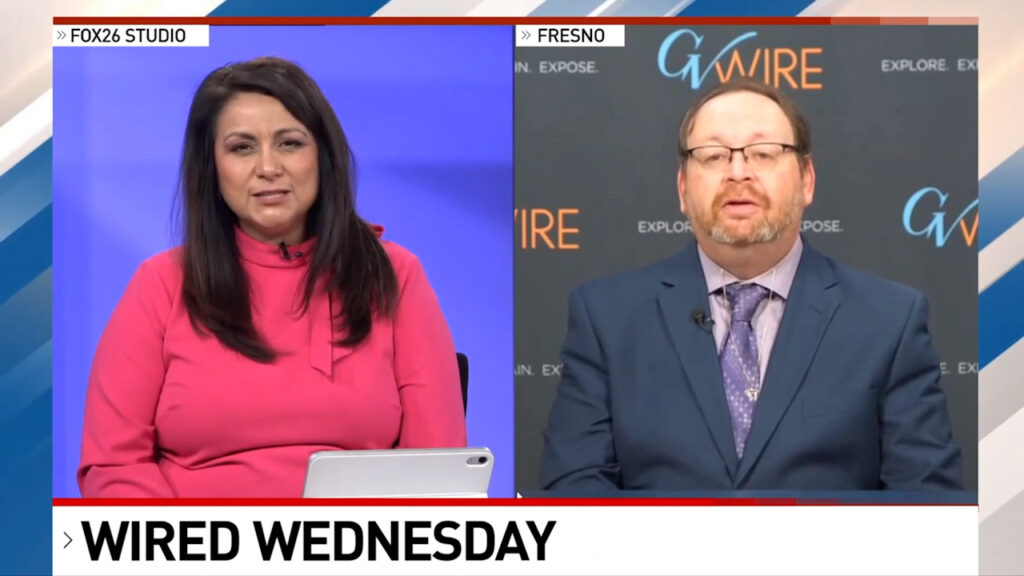Dianella Sy, a Cal State Fullerton computer science student, shows a generative A.I. image made for a team project during a summer “AI Boot Camp” held at California Polytechnic State University in San Luis Obispo, July 28, 2025. Spurred by titans like Amazon and OpenAI, Cal State wants to become the nation’s “largest AI-empowered” university. (The New York Times/Philip Cheung)

- The California State University system is teaming with Big Tech to become the nation’s “first and largest AI-empowered” training center.
- The public-private effort includes corporate titans such as Amazon, OpenAI, and Nvidia.
- Critics call the campaign a mass experiment on young people.
Share
|
Getting your Trinity Audio player ready...
|
On the first day of AI Camp, a new summer program at California State University, Savannah Bosley got a hands-on introduction to Amazon Bedrock, a system for building artificial intelligence apps.
“I figured it wouldn’t hurt to put it on the résumé, to learn a new tool that’s maybe marketable,” said Bosley, a computer science major who graduated this year from California Polytechnic State University, a Cal State campus in San Luis Obispo.
Dozens of students attended the five-day program, which was held on the Cal Poly campus and “powered by” Amazon Web Services, the e-commerce giant’s cloud computing division. Students scooped up free swag like Amazon-branded pens and notebooks. They tackled assignments on AWS Jam, a training app where students can practice AI skills. They listened as Amazon employees extolled company principles like “Think Big.”
“I’ve been thinking of it like a timeshare presentation,” Bosley, 25, said. “You get the vacation — but you also have to sit through the propaganda.”
The California State University system, the largest in the U.S. with 460,000 students, recently embarked on a public-private campaign — with corporate titans including Amazon, OpenAI, and Nvidia — to position the school as the nation’s “first and largest AI-empowered” university. One central goal is to make generative AI tools, which can produce humanlike texts and images, available across the school’s 22 campuses. Cal State also wants to embed chatbots in teaching and learning, and prepare students for “increasingly AI-driven” careers.
As part of the effort, the university is paying OpenAI $16.9 million to provide ChatGPT Edu, the company’s tool for schools, to more than half a million students and staff — which OpenAI heralded as the world’s largest rollout of ChatGPT to date. Cal State also set up an AI committee, whose members include representatives from a dozen large tech companies, to help identify the skills California employers need and improve students’ career opportunities.
Tech Companies Grow Their Role in Education
Cal State’s growing industry ties offer a glimpse into an extraordinary shift in campus power dynamics unfolding across the United States. Some major universities are inviting tech companies, which typically supply campus computers and email, to take on a much bigger role as education thought partners, AI instructors and curriculum providers.
That means dominant tech companies are now helping to steer what an entire generation of students learn about AI, and how they use it — with little rigorous evidence of educational benefits and mounting concerns that chatbots are spreading misinformation and eroding critical thinking.
Cal State’s partners, like Amazon, said they were eager to help students use a range of AI tools in different ways — not just use chatbots to look up answers.
“We need students to continue to build their problem-solving skills, their strategic thinking, their ability to communicate,” said Kim Majerus, Amazon Web Services’ vice president for global education.
Cal State is not alone. Last month, California Community Colleges, the nation’s largest community college system, announced a collaboration with Google to supply the company’s “cutting edge AI tools” and training to 2.1 million students and faculty. In July, Microsoft pledged $4 billion for teaching AI skills in schools, community colleges and to adult workers.
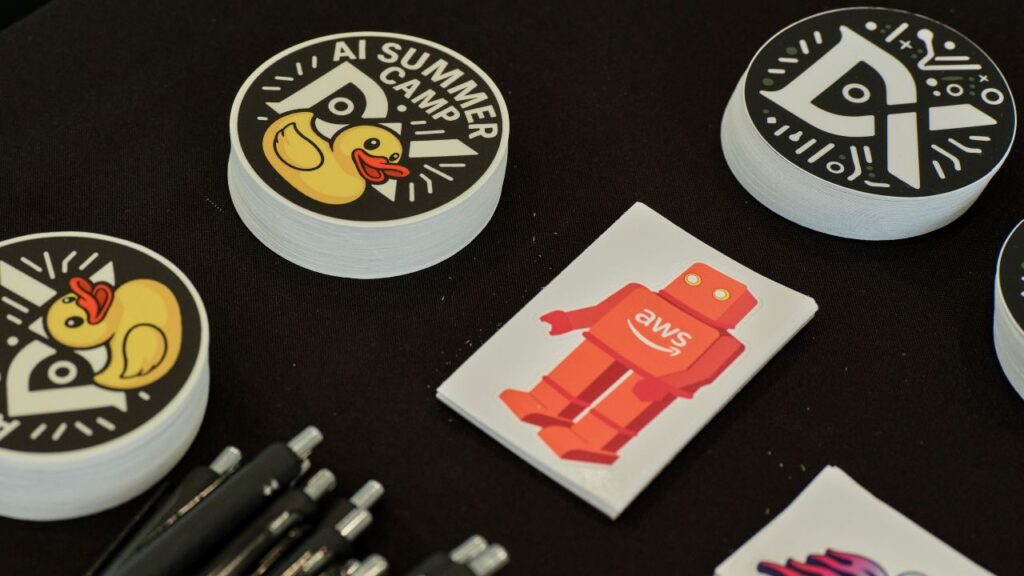
Critics Call Effort a Mass Experiment on Young People
Critics say Silicon Valley’s effort to make AI chatbots integral to education amounts to a mass experiment on young people.
After the introduction of ChatGPT in 2022, students began using chatbots en masse, including for cheating. Many schools are still wrestling with how and when to allow students to use the tech.
Now, as schools like Cal State work to usher in what they call an “AI-driven future,” some researchers warn that universities risk ceding their independence to Silicon Valley.
“Universities are not tech companies,” Olivia Guest and Iris van Rooij, two computational cognitive scientists at Radboud University in the Netherlands, recently said in comments arguing against fast AI adoption in academia. “Our role is to foster critical thinking,” the researchers said, “not to follow industry trends uncritically.”
Cal State’s AI initiative was driven in part by state officials who had heard concern from leading tech companies that local students lacked the AI skills the companies needed.
“They were getting complaints from California’s AI giants that we weren’t doing a good job in preparing our students for this evolving workforce,” said Edmund Clark, Cal State’s chief information officer.
Some faculty members have pushed back against the AI effort, as the university system faces steep budget cuts. The multimillion-dollar deal with OpenAI — which the university did not open to bidding from rivals like Google — was wasteful, they added.
Faculty Senates Criticize the AI Initiative
Faculty senates on several Cal State campuses passed resolutions this year criticizing the AI initiative, saying the university had failed to adequately address students using chatbots to cheat. Professors also said administrators’ plans glossed over the risks of AI to students’ critical thinking and ignored troubling industry labor practices and environmental costs.
Martha Kenney, a professor of women and gender studies at San Francisco State University, described the AI program as a Cal State marketing vehicle helping tech companies promote unproven chatbots as legitimate educational tools.
“It’s not a ‘partnership,’” Kenney said. “If you switch out the product, we would never say ‘Xerox is collaborating with San Francisco State to offer photocopiers to all the members of its community.’”
Jason Maymon, a spokesperson for Cal State, said it was the university’s responsibility to prepare students and faculty for a rapidly changing world. “Like the rise of the internet, artificial intelligence is another technological revolution, and higher education can’t simply stand by and watch,” he said.
The university’s new AI camp with Amazon was a major part of Cal State’s initiative. Administrators from many campuses submitted proposals for student projects.
Cal Poly, a school founded in 1901 as a vocational training center, held the camp. It grew out of an initiative called the Digital Transformation Hub, or DxHub, where students work with university and Amazon employees to develop apps for nonprofits and government agencies.
The aim of the camp was to offer students from every Cal State campus the chance to use AI to tackle campus administration challenges — such as placing transfer students in appropriate-level math courses.
Learning New Career Skills
Although the 80 students from 19 campuses majored in everything from computer science to zoology, they came for the same purpose: to learn AI career skills.
“AI is the next phase of life, just like the internet which changed everything,” said Aiman Madan, a computer science major who graduated this year from Cal State San Marcos. “It’s a race and we need to know how to get ahead.”
As the camp kicked off, employees from Cal Poly and Amazon gave students an overview of generative AI, noting potential uses in fields like business and medicine. Ryan Matteson, DxHub’s technology director, also warned students about risks like AI bias and environmental costs.
Later in the week, students watched a futuristic video from an AI education startup called Matter and Space. The reel showed Native American young people wearing AI glasses and tracking devices that continually monitored their activities and mood.
Then Paul J. LeBlanc, a co-founder of the startup, told students that AI technologies would soon diagnose illnesses faster and more accurately than doctors, displacing human expertise.
Some students said they were reminded of the dystopian show “Black Mirror.”
“I don’t want AI to create more inequalities and disparities,” said Charles Walker Cano, a biology major at Stanislaus State who plans to become a physician.
Finally, students dove into group projects to solve campus administrative problems. One team assigned to streamline procurement procedures used AI to quickly create a prototype for an app that could automatically score vendor proposals on how well they fit university criteria.
Some students said they appreciated the chance to tackle concrete problems for actual clients. Among them was Arash Peighambari, who recently graduated from Cal State San Marcos with a master’s in computer science.
During graduate school, he had worked on a research project building an AI system to detect problems with power grids.
“This is more client and product and commercial-oriented,” Peighambari said of the AWS camp.
This article originally appeared in The New York Times.
By Natasha Singer and Philip Cheung
c.2025 The New York Times Company
RELATED TOPICS:
Categories
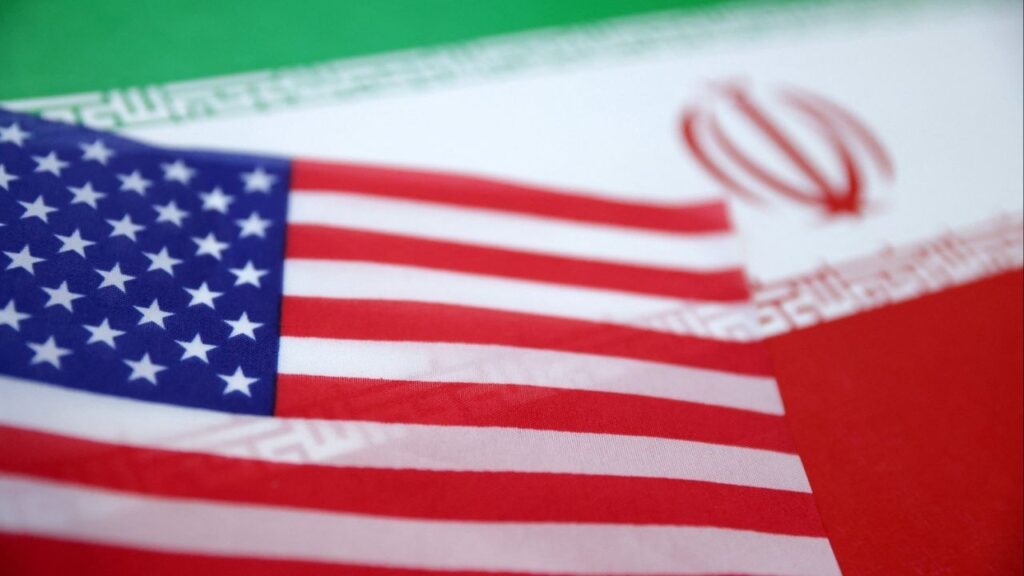
US, Iran Spar Over Nuclear Talks at UN



